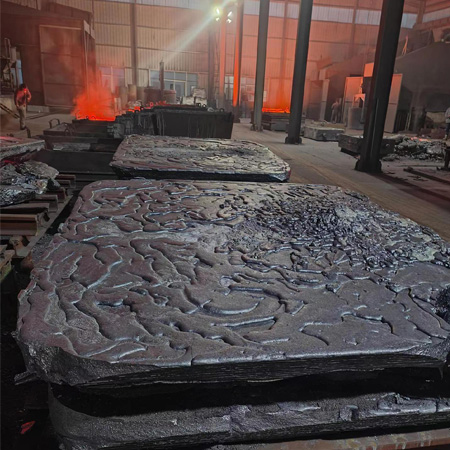Metallic silicon, also known as metal silicon, industrial silicon, is a product of silicon (content above 98.5%). Silicon metal, made from material of silica and reducing agent in submerged arc furnace. Silicon metal standard and models has been evolved in the growing of industry.

In 2014, China issued a new version of the industrial silicon standard “GBT 2881-2014”. It clearly stipulates the grades, test methods, inspection rules, marking, packaging of the product. It also specifies other conditions includes transportation, storage, etc. of silicon metal. According to the this silicon metal standard and models, the quality inspection of silicon metal includes the content elements, particle size, appearance, etc. According to China’s national standard “GBT 2881-2014”, there are 8 models according to the different contents of iron, aluminum and calcium. These eight grades are Si553, Si521, Si441, Si421, Si411, Si3303, Si2202, Si1101, etc. The 4 digits in these grades represent the maximum content requirements of the main impurities iron, aluminum, and calcium, respectively. For example: Silicon metal 553 represents iron content <0.5%, aluminum content <0.5%, and calcium content <0.30%.
The main factors affecting the quality of industrial silicon are silica and reducing agents (washed coal, petroleum coke, charcoal). The raw materials directly determine the content of the main metal impurities iron, aluminum, calcium and trace elements. In addition, silicon metal manufacturers in China have different production standardization and automation levels. Ages of the silicon metal furnace, engineers, skilled workers and other factors will also affect the quality of silicon metals.
Silicon Metal Models
The aluminum element in metal silicon mainly comes from silica and washed coal. The aluminum content can be adjusted by adjusting the raw material ratio or adding lime during the refining process. Aluminum alloy products themselves contain a high amount of aluminum. Under normal circumstances, aluminum alloys do not require the aluminum content in industrial silicon. However, the aluminum element will affect the reactivity of organic silicon. Therefore, organic silicon monomer companies have strict requirements on the aluminum content of industrial silicon. Most of them require it to be within 0.2%, and a few require it to be within 0.1% or require an interval value.
The iron in Si metal mainly comes from silica, which is difficult to remove during the smelting and refining process. The downstream such as organic silicon and aluminum alloy require for the iron content in are relatively broad. The reason is that iron has little effect on organic silicon production, and the iron is easy to remove in the production of aluminum alloys. Organic silicon generally requires that the iron content in silicon metal be within 0.4%~0.5%, which means it need to use silicon metal 441 or higher models as material.
After industrial silicon is refined and oxygenated, the calcium content can be reduced to below 0.1%. Organic silicon and aluminum alloys are also more concerned about the calcium content in industrial silicon. Different companies have different requirements for the calcium content in industrial silicon due to their different processes and other raw materials. Organic silicon mostly requires the calcium content of industrial silicon to be within 0.1%, and a few require it to be within 0.03%; aluminum alloys have different requirements for the calcium content of industrial silicon due to different grades.
